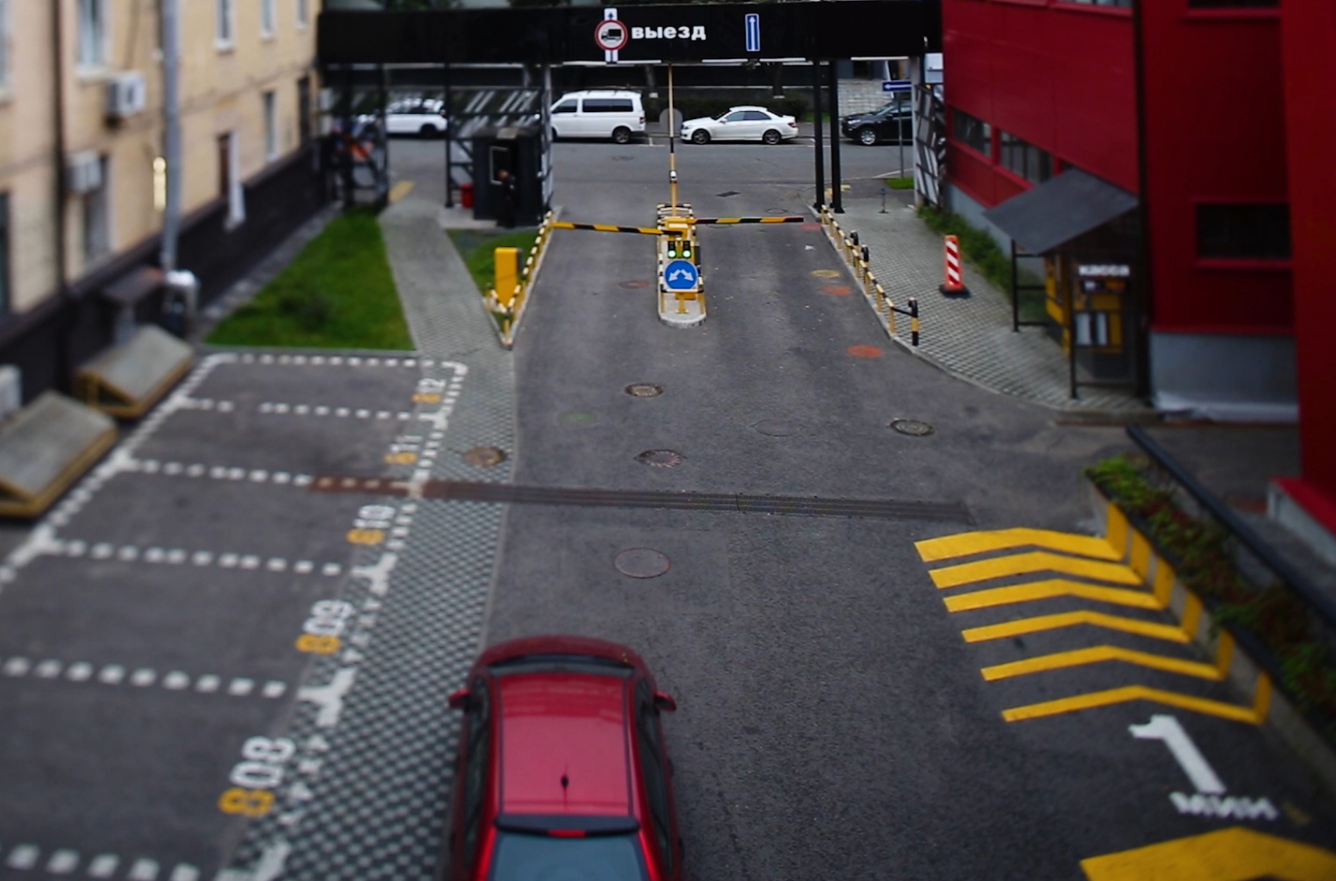Wedge Barriers & Strong Arm: Which is Right for You?
When it comes to securing your property and controlling access effectively, the choice between Wedge Barriers and Strong Arm Operators can be pivotal. Making the right decision depends on various factors, from security needs to space constraints and budget considerations.
In this guide, we’ll walk you through the key considerations and help you navigate the decision-making process, ensuring you select the access control solution that best aligns with your unique requirements and objectives.
Understanding Your Security Needs
Take the time to assess the level of security required for your property or facility. Consider factors such as the nature of the premises, the potential threats, and the value of assets or people you are safeguarding.
Are you primarily concerned with preventing unauthorized access, or do you need a solution that can also act as a barrier against forced vehicle entry in high-security environments? By defining your security objectives, you’ll be better equipped to select the system that aligns with your specific protection requirements.
Moreover, take into account the surrounding environment. Are there any unique geographical or weather-related considerations that might affect the security solution’s performance? Understanding the full scope of your security needs will help you choose between Wedge Barriers and Strong Arm Operators and ensure that the selected system can provide the level of protection and peace of mind you require for your property or facility.
Lastly, think about the potential for future growth and scalability. A solution that meets your current needs might not be sufficient in the long term. Consider whether your security requirements will evolve and if the chosen system can adapt accordingly. Considering these factors during the decision-making process will help you make a choice that is both effective in the present and flexible for the future.
Traffic Flow and Access Control
An essential aspect of choosing between Wedge Barriers and Strong Arm Operators is evaluating how each system aligns with your traffic flow and access control requirements.
Consider the volume and frequency of vehicle traffic you anticipate. Are you managing a high-traffic commercial area, a gated residential community, or an industrial site with heavy machinery? Understanding your traffic flow is crucial because it directly impacts the efficiency and effectiveness of your chosen access control solution.
Access control involves determining who is allowed entry and under what conditions. Different systems offer varying levels of control. For instance, if you require precise control over individual vehicles and personnel access, a Strong Arm Operator with integrated access control features might be the ideal choice.
On the other hand, if you prioritize swift and automated access for authorized vehicles while maintaining a robust barrier against unauthorized entry, a Wedge Barrier could be more suitable. Carefully analyzing your traffic flow and access control needs will help you select the system that can seamlessly manage entry while maintaining security.
Consider the potential for future changes in traffic flow and access control requirements. As your property or facility evolves, your access control needs may change. Ensure that the chosen system can adapt to accommodate these shifts, providing a long-term solution that remains effective even as your circumstances change. By considering these factors, you can make an informed decision that optimizes security and accessibility.
Space and Installation Considerations
When deciding between Wedge Barriers and Strong Arm Operators, it’s crucial to evaluate the space available for installation and the specific installation requirements associated with each system. The physical layout of your property or facility can significantly impact your choice, as different access control solutions have varying spatial demands.
Consider the following factors:
- Space Constraints: Determine if you have limited space to install access control equipment. Wedge Barriers typically require less horizontal space than Strong Arm Operators, making them better for areas with restricted space.
- Vertical Clearance: Assess the vertical clearance available at your entry point. Strong Arm Operators typically require more vertical clearance for their arm to pivot, while Wedge Barriers are often designed for low-clearance environments.
- Foundation and Surface: Examine the ground condition where the system will be installed. Some systems may require specific foundation requirements or surface types, so ensuring compatibility with your site conditions is important.
- Environmental Considerations: Consider any environmental factors, such as exposure to extreme weather conditions or corrosive environments, as this may affect the choice of materials and maintenance requirements.
Understanding these space and installation considerations will help you select the access control solution that can be seamlessly integrated into your site while meeting your security and practical needs. It’s essential to ensure that the chosen system fits physically and functions optimally within your property’s constraints.
Maintenance and Servicing
Ensuring the ongoing functionality and effectiveness of your chosen access control system is crucial. Maintenance and servicing requirements can vary between Wedge Barriers and Strong Arm Operators, and understanding these needs is essential for long-term security and convenience. Here are some key considerations:
- Scheduled Maintenance: Determine the regular maintenance tasks required for each system. Strong Arm Operators may need more frequent maintenance due to their mechanical components, while Wedge Barriers typically have fewer moving parts, resulting in lower maintenance needs. Scheduled maintenance helps prevent unexpected breakdowns and ensures that your system operates smoothly.
- Availability of Parts and Service Providers: Investigate the availability of replacement parts and qualified service providers for your chosen system. It’s essential to have access to components and technicians who can perform necessary repairs promptly. Consider whether your location has local support for the selected access control solution.
- Ease of Maintenance: Assess the ease of performing maintenance tasks. Some systems may require specialized training or tools for servicing, while others are designed for straightforward maintenance that can be performed by on-site staff. Choosing a system that aligns with your maintenance capabilities can streamline upkeep and reduce operational downtime.
By carefully considering the maintenance and servicing requirements of Wedge Barriers and Strong Arm Operators, you can plan for ongoing system care and ensure that your access control solution continues to provide reliable security and access management.
Cost Comparison
Comparing the costs associated with Wedge Barriers and Strong Arm Operators is vital in making an informed decision for your access control needs. The financial aspect of your choice encompasses both initial expenses and long-term operational costs. Here’s how you can approach this evaluation:
- Initial Investment: Consider the upfront costs of purchasing and installing each system. Strong Arm Operators tend to have a higher initial investment due to their complex mechanical components and often require additional infrastructure for installation. In contrast, wedge barriers are typically more cost-effective in terms of initial expenditure.
- Operational Costs: Beyond the initial investment, analyze the ongoing operational costs associated with each system. This includes factors like energy consumption, maintenance, and servicing expenses. Strong Arm Operators may have higher maintenance and energy costs due to their mechanical nature, while Wedge Barriers often require less upkeep and consume less power.
- Long-Term Value: Assess the long-term value that each system provides. Consider factors such as the expected lifespan, reliability, and how well each system aligns with your specific security needs. While Strong Arm Operators may have a higher upfront cost, they might offer greater durability and security in high-risk environments, potentially delivering better long-term value.
By conducting a comprehensive cost comparison between Wedge Barriers and Strong Arm Operators, you can make a financially sound decision that fits your budget and ensures the most efficient and effective access control solution for your property or facility.
Wedge Barriers
1. HySecurity HydraWedge SM50
- Features:
- Hydraulic drive system for reliable operation
- Fast deployment speed
- Crash-rated to stop vehicles up to 50 mph
- Built-in heater for all-weather operation
- Benefits:
- High security for critical infrastructure
- Durable and reliable in various environmental conditions
- Easy integration with access control systems
2. FAAC J355 HA M50
- Features:
- Hydraulic bollard with high impact resistance
- Certified to stop a 7.5-ton vehicle at 50 mph
- Available in automatic and semi-automatic models
- Aesthetic design for urban settings
- Benefits:
- Strong physical security while maintaining urban aesthetics
- Flexible deployment options
- High reliability and low maintenance
3. Doorking 1601-380 Barrier Gate Operator
- Features:
- Electromechanical operation
- Adjustable speed and integrated anti-tailgating
- Compatible with various access control systems
- Suitable for medium to high traffic areas
- Benefits:
- Effective vehicle control and security
- Robust performance with minimal maintenance
- Easy to install and integrate
Strong Arm Operators
1. LiftMaster MATDCBB3 Barrier Gate Operator
- Features:
- Heavy-duty operator for commercial and industrial use
- Direct drive DC motor for smooth operation
- Battery backup for uninterrupted service
- Integrated MyQ technology for remote monitoring and control
- Benefits:
- Reliable operation even during power outages
- Easy remote management and monitoring
- High durability and low maintenance
2. HySecurity StrongArm M30
- Features:
- Electromechanical barrier arm with a crash rating
- Designed to stop vehicles at 30 mph
- Programmable operation for various security levels
- LED arm lighting for visibility
- Benefits:
- High security with crash-rated performance
- Versatile application in different security environments
- Enhanced visibility and safety with LED lighting
3. FAAC B680H Barrier Gate Operator
- Features:
- Hydraulic barrier with hybrid technology
- Long-lasting and reliable with up to 2 million cycles
- Fast opening and closing times
- Integrated control unit with advanced programming capabilities
- Benefits:
- Extremely durable and reliable for high-traffic areas
- Quick response times enhance security
- Advanced control features for customization
Consult with R3 Access
When deciding between Wedge Barriers and Strong Arm Operators for your access control needs, don’t hesitate to consult with R3 Access. Our team of experts is here to provide you with personalized guidance and recommendations based on your specific requirements. We understand that every property and facility is unique, and our in-depth knowledge of access control systems allows us to offer tailored solutions that maximize security and convenience.
Whether you need assistance in assessing your security needs, understanding installation requirements, or conducting a cost-benefit analysis, our dedicated professionals are ready to assist you in making the right choice. Contact R3 Access today to benefit from our expertise and ensure that your access control solution perfectly suits your needs.
Follow us on linkedin


